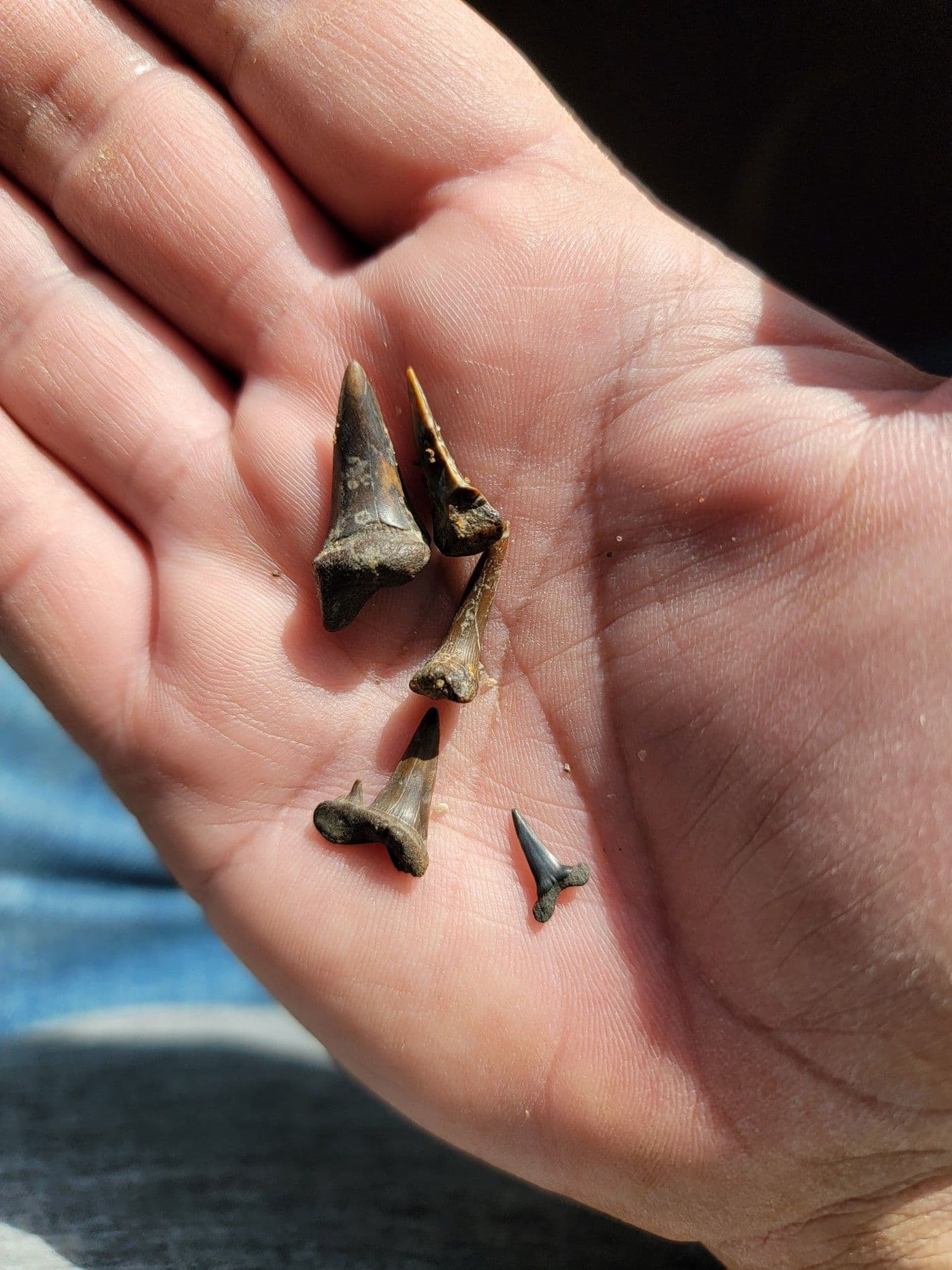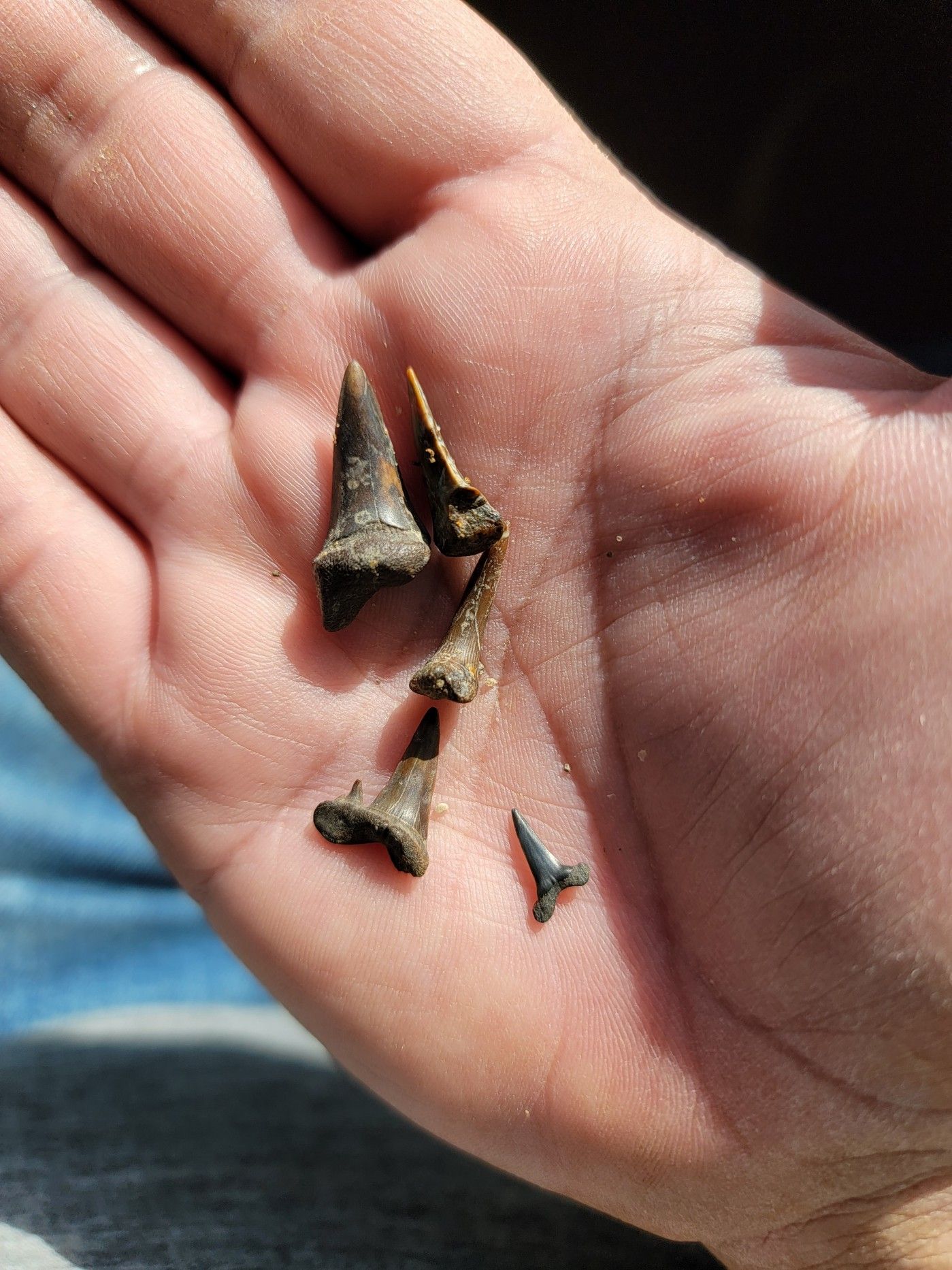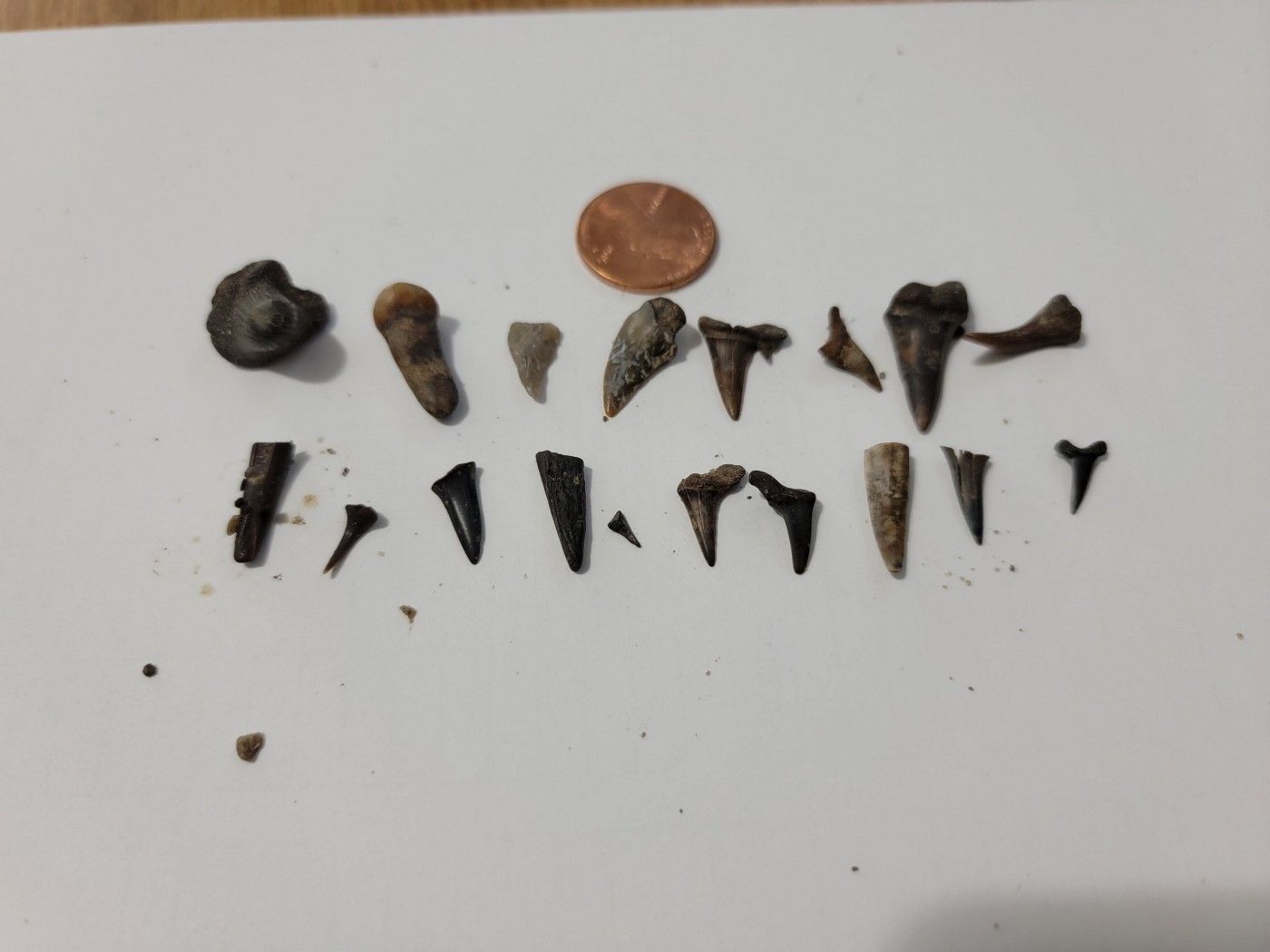
Post Oak Creek Fossil Shark Teeth Hunting
Post Oak Creek fossil shark teeth hunting
I live in the North Dallas area. I have lived here for 38 years and I had never heard of this place before. A co-worker last weekend invited my family to the Post Oak Creek near Sherman Texas. This place is famous for large amounts of fossil shark teeth from the cretaceous period and other bones of cretaceous marine reptiles.

Where to park?
The official address for parking is 2298 S Travis St, Sherman, TX 75090. There is a field near the Travis St bridge. You can park in the field or along the road. There is only a slight walk down to the creek. You can start searching for fossils immediately once you reach the creek. Some people opt to walk down or upstream to possibly find more fossil due to less people having already looked the are over.

What do you need to bring?
You will want to bring a good set of water boots. You will almost certainly get wet, or muddy at least. You can search for fossils on dry land, or in the water. Either way, having sturdy boots that keep your feet dry are very important. There is a lot of broken glass, so walking barefoot is not recommended. Blankets, buckets, sieves, shovels, chairs, water to drink, sunscreen and bug spray are all optional items that will make the search much more pleasant.
How to find fossils?
I have been told that the average person will find about 4–6 shark teeth per hour. My family found 17 in 2 hours. It was our first time, so we were not knowledgeable or efficient. I believe we could double that amount the next time we go.
First search for a spot that you like. Some people like to search the surface of dry land, others like to search the water. We found teeth and bones in both areas.
For dry land, you can slowly brush the top layers of gravel around and watch for shark teeth. This is best done after a rain where fresh teeth may have surfaced. You can also use shovels or a trawl to dig a hole. Place the gravel in a sieve and search the shifted gravel for teeth.
For searching in the water, you will use the same process. Scoop gravel from the creek bed into a strainer or sieve and filter the sand like gravel out. Then pick through the gravel that remains, looking for teeth.
The teeth can be very tiny, to somewhat larger size. You will need to look closely or you may miss some teeth. The smallest teeth I found were about 1/6th of an inch.
Below are the 17 shark teeth we found and 1 Ptychodus tooth that someone else gave my son.

Appreciate the creator